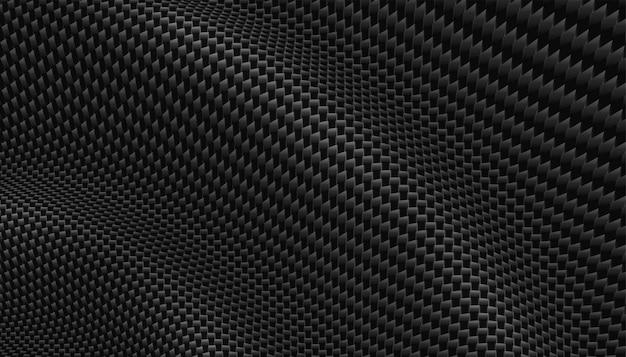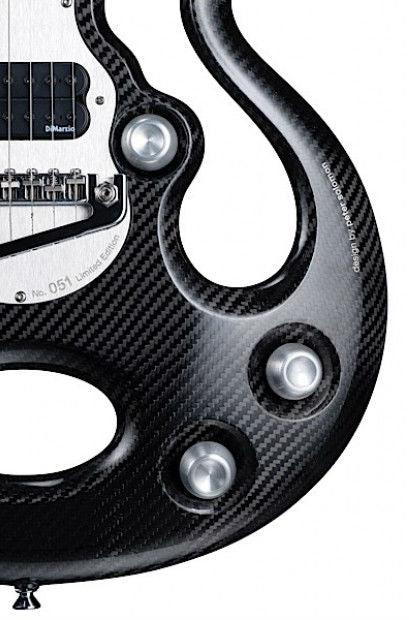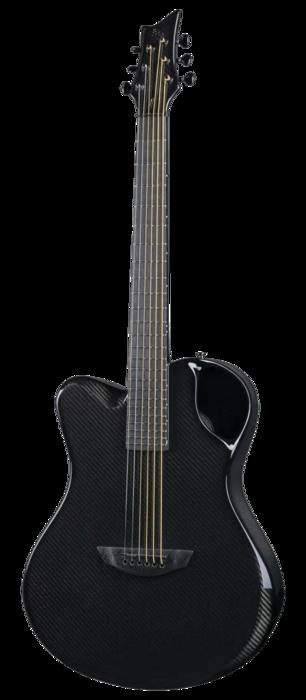Imagine the perfect guitar. It projects every note with astonishing clarity, its durability is unmatched and it retains its tune even in harsh conditions. Now, what if I told you such a guitar exists, and it’s not made of wood but of carbon fiber? Yes, you heard right, it’s the carbon fiber electric guitar and it’s revolutionizing the world of music as we know it! I am David Garcia, an engineer and a stringed instrument enthusiast, here to guide you through this exciting journey.
Every revolution begins with why. Why go carbon fiber? The answers lie deep within the fabric of the material itself – lighter yet stronger, resistant to climactic shifts, and a unique tone that sets it apart from traditional wooden counterparts. But I digress, we’ll delve into this a bit later.
As we embark on this exploration, we will dive deep into the materials, the makers, and the market leaders in the carbon fiber guitar industry. We will unravel the science behind it, the masters crafting it, and the pioneers pushing boundaries. Of course, no inquiry is complete without understanding the advantages and equally important, the drawbacks.
This exploration isn’t just about the carbon fiber electric guitar as an object. It’s about the transformation it symbolizes in the musical landscape, the doors it opens for players, and the pathways it paves for the future. To anyone who’s ever strummed a guitar or dreamed of doing so, this is your front row ticket to a revolution happening right under your fingers! So, stick around, and let’s unveil the magic of carbon fiber electric guitars, shall we?
Material and Design of Carbon Fiber Guitars
What Is Carbon Fiber Material?

After delving into the world of materials, I must tell you about my fascination with carbon fiber material. Carbon fiber’s uniqueness lies in its potent combination of characteristics. It’s super lightweight, yet incredibly strong, often boasting strengths surpassing traditional build materials like wood or metal. Moreover, it has an enviable resistance to temperature changes and external elements, crucial when considering the stress musical instruments undergo.
My engineering background has allowed me to deep-dive into understanding materials, and carbon fiber has undoubtedly caught my interest. As a highly versatile material, carbon fiber brings an exciting innovation to guitar manufacturing. Its application is transforming the way we conceive and interact with instruments, opening up realms of extraordinary tonal capabilities and design possibilities.
As we move forth in our exploration of carbon fiber electric guitars, remember that the essence of this transformative material lies in its exceptional resilience, lightness and strength. It offers a refreshing departure from traditional wood-based designs, making way for the creation of guitars that are both aesthetically striking and sonically superior. The influence of the carbon fiber material on the overall performance, affordability, and durability of electric guitars cannot be overstated, making it a foundational consideration in any serious discourse about these instruments.
Design of Carbon Fiber Electric Guitars

As a luthier, I believe that the design of carbon fiber electric guitars extends beyond their visual appeal; it’s a harmonious blend of material and design. Such guitars carry a distinctive profile, marked by their lightweight structure, yet rugged endurance. These traits stem from the high strength-to-weight ratio of carbon fiber, a key advantage in electric guitar design.
The process of luthing a carbon fiber electric guitar represents an amalgamation of traditional craftsmanship and modern material science. In this design, carbon fiber’s resilience to environmental changes ensures a consistent tonal output, irrespective of fluctuating conditions – a definitive advantage for touring musicians.
Yet, similarity to traditional wood design is vital. We strive to retain the signature curve of the body, the smooth fretboard, and the precise alignment of strings while crafting a guitar, ensuring that every carbon fiber electric guitar still feels like a guitar. This careful balance of traditional and novel attributes defines the unique art of crafting carbon fiber electric guitars.
It’s astounding, transposing a sheet of woven carbon fibers into an instrument that not only looks striking but produces exceptional sound. These guitars, while inherently modern, carry a timeless quality in their design – their unique aesthetics, tonal capacity, and long-lasting nature are all testaments to this fusion.
Overall, carbon fiber lends itself well to the design of electric guitars, where its material properties can be harnessed to create truly unique instruments.
Makers and Market Leaders in Carbon Fiber Guitars

As we move through the strings of the carbon fibers world, we must note the compass that guides us – the concept of desire. Desire is a powerful motivator that drives audacious leaps in the field of instrument construction. It’s what keeps us pushing the boundaries, looking for the perfect resonance, even when we’re venturing into the unfamiliar territories like carbon fiber. However, desire also makes us discerning and as an artisan luthier, I value this quality above all else. It’s this keen eye for quality that helps me distinguish between major industry players. Now, unto the big question.
Ever wondered who the top players in the world of carbon fiber guitars are? Let’s thrust the limelight on them. These are the creators that rise to the top, consistently demonstrating their capacity to craft sound experiences of ultimate quality and immense durability. Their artistry is such that their instruments are not just musical devices but veritable works of art with a heart and soul.
Believe me when I say the world of carbon fiber guitar makers is one that is thriving and dynamic. Being connected with various lutherie groups, such as the New England Luthiers, I’ve been fortunate to watch up-close the prowess of many industry-leading craftsmen. Often, these are names revered in the guitar-making society for their commitment to quality, innovation, and sustainability. They stand out for their ability to blend tradition with modern materials, maintaining the soulful essence of wood while harnessing the limitless potential of carbon fiber.
Detailed workmanship, superior materials, and a dedication to the art – these combined are what set the market leaders in carbon fiber guitars apart from the rest of the pack. Their works, while cutting edge, respect the centuries-old craft of lutherie. They masterfully work the carbon fiber into the guitar’s design – from its bodice to its neck, from its bridge to its headstock – with such finesse that it’s an experience of its own.
Interacting with these luminaries, I’ve learned that carbon fiber truly presents us with a new frontier in guitar making. And a handful of makers are forging their paths in this exciting realm, writing a new chapter in the history of this art form. Their instruments, meticulous and refined, bring forth a new dimension in sound quality, project an unmatched aesthetic appeal, and cater to forward-thinking musicians who yearn for consistency in their performances.
As we delve deeper into carbon fiber’s potential in the making of electric guitars, I find a synergy between this innovative material and the unparalleled skill of these market leaders. It’s a fusion that brings forth extraordinary instruments that echo with the richness of evolution and tradition alike. The journey is just beginning as we explore the nuances of advantages and disadvantages of this contemporary material in the following section, but the melody has already a deep impression, and that’s the marvel of innovative guitar crafting and the leader’s relentless pursuit towards perfection.
Advantages and Disadvantages of Carbon Fiber Electric Guitars
Advantages of Carbon Fiber Electric Guitars

In my luthier practice, I’ve discovered several remarkable benefits of crafting electric guitars using carbon fiber. The advantages of this carbon fiber instrument design are numerous and transformative. To begin, carbon fiber offers unmatched endurance. This material’s strength to weight ratio surpasses that of traditional wood, enabling carbon fiber guitars to endure stresses and damages that could harm a wooden guitar.
Secondly, the consistency of carbon fiber is a significant advantage. Unlike wood, which can vary significantly from one guitar to another, carbon fiber has a uniform composition. This uniformity offers both luthiers like me and musicians a consistent tone and performance across various guitars, ensuring that every note you play rings with precision.
Finally, the climatic resilience of carbon fiber guitars makes them a reliable choice for artists. Unlike wooden instruments, exposure to variations in temperature and humidity doesn’t warp or impact the structural integrity of a guitar made from carbon fiber. This robustness is particularly helpful for touring musicians who encounter diverse climates.
No material is without its drawbacks, though, and carbon fiber is no exception. Its unique properties convey both strengths and weaknesses — a crucial factor in considering whether your next instrument should be a carbon fiber electric guitar.
Navigating these pros and cons can be an intricate task. In the following section, we will delve deeper into the disadvantages posed by carbon fiber guitars to provide an all-encompassing perspective to help align your preferences and needs with the right material. From my extensive experience, however, the benefits of carbon fiber instruments are undoubtedly compelling and have dramatically reshaped the landscape of electric guitars in the industry.
Disadvantages of Carbon Fiber Electric Guitars

Having delved into the unparalleled resilience and extraordinary sonics of carbon fiber electric guitars, it’s vital to strike a chord of balance by also acknowledging the potential downsides of this modern marvel. Each carbon fiber instrument indeed exhibits a handful of disadvantages that are worth considering.
Foremost, the cost of carbon fiber electric guitars is considerably high. This is attributable to the complex production process and the expensive nature of raw materials. So, while it’s profoundly durable, this advanced instrument might not be accessible to all owing to its steep price.
Beyond the financial aspect, the unique sound quality of carbon fiber guitars may not appeal to purists. While it’s true that they amplify sound brilliantly, the resonance differs from traditional wooden guitars. This tonal variation, often described as less warm, could be an issue for those seeking a more classic guitar sound.
Moreover, the feel of a carbon fiber guitar might not be to everyone’s liking. The finish is a lot smoother as compared to wood, and some guitarists report they miss the organic feel of a wooden instrument.
In conclusion, while a carbon fiber electric guitar is a triumph of technology and design, it’s not without shortcomings. Its cost, tonal difference, and the unfamiliar feel might detract guitar enthusiasts from making the shift. Understanding both sides of the coin is essential to making an informed decision, and as a dedicated hand at shedding light on the world of guitars, I hope this comprehensive take on carbon fiber instruments has provided you the insight you need.
FAQs
What are Carbon Fiber Electric Guitars?
Carbon fiber electric guitars are musical instruments that have their main structural components made from carbon fiber, a material known for its light weight, high durability, and excellent vibration properties. This makes these guitars lightweight yet strong, with a crisp, clear sound that many musicians appreciate.
Who are the prominent makers of Carbon Fiber Electric Guitars?
Some of the top manufacturers of carbon fiber electric guitars include Emerald Guitars, Composite Acoustics, Rainsong, Blackbird, KLOS, and McPherson. These companies are known for their high quality craftsmanship, innovative designs, and their commitment to utilizing carbon fiber and other advanced materials in their instruments.
Who are the market leaders for Carbon Fiber Electric Guitars?
The market leaders for carbon fiber electric guitars are Emerald Guitars, Rainsong, and Blackbird. These companies continually push the boundaries of what is possible with carbon fiber construction, providing musicians with instruments that are not only incredibly durable and lightweight, but also provide excellent tonal properties.
Conclusion
Ready to wrap up our exploration of carbon fiber electric guitars? Let’s summarize and reflect on what we’ve learned. Understanding the material and design of these stringed marvels has offered us a unique perspective on their construction. The specific traits of carbon fiber as a material, including its lightweight nature and resilience, lends itself well to the durability and long-lasting performance of electric guitars. Further, the distinctive design fosters convenience and versatility.
Examining the field further, we’ve delved into the key players in the production of these instruments. Market leaders have continually pushed boundaries, delivering superior sound quality and a renewed playing experience. Yet, it is imperative to acknowledge that, like every product, carbon fiber electric guitars have their share of disadvantages.
As a luthier, engineer, and researcher, my journey studying this subject has been profoundly informative and enlightening. I trust this exploration has imbued you with a deeper understanding and appreciation for these innovative instruments. Extending my investigation to your own experiences, I encourage you to weigh the advantages against the drawbacks, to determine if a carbon fiber electric guitar aligns with your personal music-making journey.
In the end, the choice is yours: Is the carbon fiber electric guitar the future of stringed instruments? Take these learnings and make an informed decision as you venture into new territories of music exploration.
